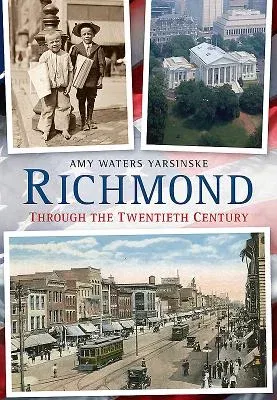Amy Waters Yarsinske
(Author)Richmond Through the Twentieth CenturyPaperback, 26 September 2016

Qty
1
Turbo
Ships in 2 - 3 days
In Stock
Free Delivery
Cash on Delivery
15 Days
Free Returns
Secure Checkout

Part of Series
America Through Time
Part of Series
America Through the 20th Century
Print Length
96 pages
Language
English
Publisher
America Through Time
Date Published
26 Sep 2016
ISBN-10
1634990005
ISBN-13
9781634990004
Description
Product Details
Author:
Book Format:
Paperback
Country of Origin:
US
Date Published:
26 September 2016
Dimensions:
24.64 x
17.27 x
1.02 cm
Genre:
South
ISBN-10:
1634990005
ISBN-13:
9781634990004
Language:
English
Pages:
96
Publisher:
Weight:
453.59 gm